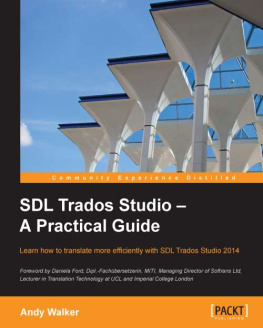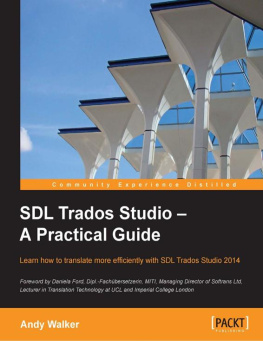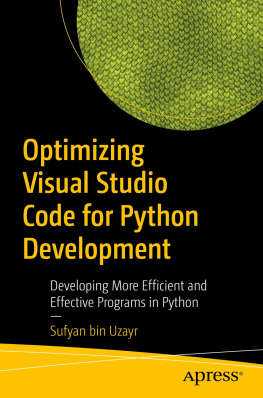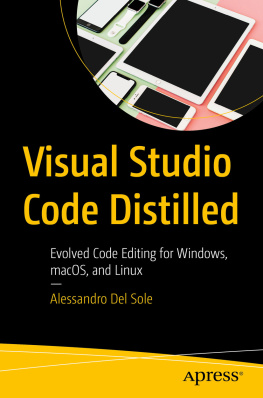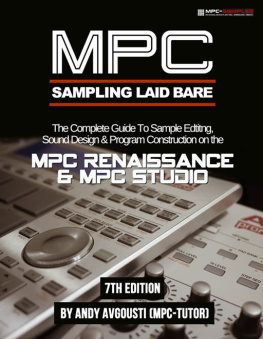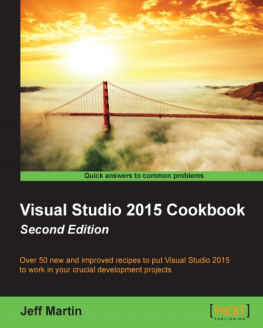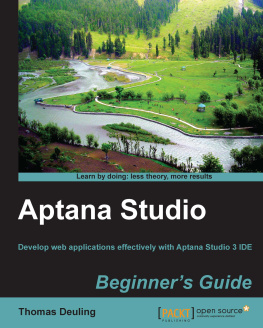Foreword
Life as a professional translator today is a completely different kettle of fish to what it was only 25 years ago. Translators are no longer "just" linguistsmany have to embrace translation technology in order to remain competitive or to even simply get that in-house or freelance translation job.
One of the major developments in translation technology has been Translation Memory Toolssoftware programs that became commercially available in the mid-1990s and started out as mere databases, which a translator could "fill" with original texts and their corresponding translations, and which would then serve as the translator's memory. If the translator translated another text that contained identical or even similar sentences, the translation memory would search automatically (in the background) whether a translation already existed, and if so, would insert this translation automatically into the new file for translation. It all seemed magical at the time, although it obviously wasn't!
Back in the day, Translation Memory software was small, shipped on 3.5-inch floppy disks, and the user guide consisted of some 30 pages, which a fairly computer-literate translator could peruse and then proceed to use the software straight away. Times have changed since then; there are now a lot of different Translation Memory tools from a number of vendors on the market. The software tends to be available for download only, and most tools no longer come with a printed user guide but a massive online help consisting of thousands of pages. The software itself has become a full-blown tool in many cases, with features such as terminology management, project management, and so forth added on.
Many Translation Memory tool vendors now offer online and face-to-face training sessions in order to assist users to learn how to use the tool. Similarly, many universities all over the world have recognized that their translation students need to know what a Translation Memory tool is and how to use it, and have therefore included translation memory in their curricula.
This book has a really practical focus and fills a big gap in the market. I can see the book being used by both fledgling and experienced translators to learn how to use SDL Trados Studio at their own pace. I can also see the book on the virtual and real bookshelves of university libraries and as a companion/reader on every university course that teaches SDL Trados Studio.
London, February 2014
Daniela Ford
Dipl.-Fachbersetzerin, MITI, Managing Director of Softrans Ltd, Lecturer in Translation Technology at UCL and Imperial College London
About the Author
Andy Walker has worked for many years as a translator and is an experienced trainer and teacher of translation technology. He combines his work as a freelance translator (working from Japanese, French, and German into English) and Japanese-English interpreter with the post of a Senior Lecturer in Translation Technology at the University of Roehampton in London. As well as being a Member of the Institute of Translation and Interpreting (MITI), he is an Approved Trainer for SDL Trados Studio and currently one of SDL's Lecturer Champions.
I would like to thank my family, my colleagues at the University of Roehampton, and the staff of SDL for their support with the writing of this book. In particular, I would like to acknowledge the role of the technical reviewers Alison Field, Jerzy Czopik, and Daniela Ford. Their numerous insights, corrections, and suggestions have resulted in great many improvements to the content of the book.
About the Reviewers
Jerzy Czopik , born in Cracow, studied Mechanical Engineering at the Cracow Technical University. He finished his studies after relocating to Germany in 1986 at the University Dortmund. Since 1990, he has been a full-time translator and interpreter for German and Polish. He is a user of many CAT tools and trainer for SDL Trados products. He is an LICS auditor for the translation standard EN 15038.
He is the author of the manual SDL Trados Studio 2009 dla (nie)wtajemniczonych , published by Biuro Marketingowe Adebik, 2011 , ISBN 8362134097.
Alison Field is a freelance technical translator, proofreader/reviewer, and trainer. She has worked in linguistics for some considerable time, covering virtually all aspects of the translation chain at some point in her career, seasoned with teaching French for enjoyment.
For many years, Alison worked for Balthasar Ltd, a small translation agency based in Herefordshire. This is a company that has built its success, firstly on the strength of a gifted, committed team, and secondly, by never compromising on its watchword: quality.
Through this experience and her own ongoing professional development, Alison became increasingly conversant, first with Trados, then SDL Studio, and of course MultiTerm. She progressed to becoming an invaluable member of the SDL beta testing team, which she finds highly rewarding.
Alison loves nothing better than "playing" with languages, especially using computer software to do so. She happily spends hours troubleshooting others' issues with CAT software, displaying all the tenacity of a Yorkshire terrier with a bone. When presented with an apparently insoluble problem, Alison's usual response is "hmm, that's interesting", following which she might not surface again for a few hours until she has got right to the root of the problem, and probably solved several others along the way!
I would like to thank Andy for the honor of performing a technical review of his book, which I have thoroughly enjoyed.

